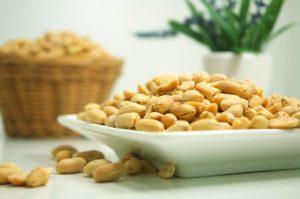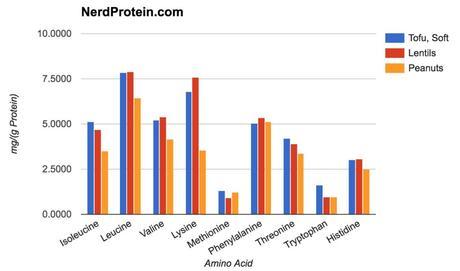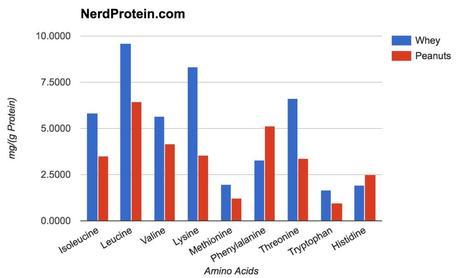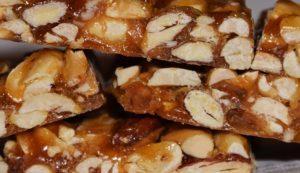So you know that peanuts have some protein in them.
Now you want to know about the quality and just how much protein is there in a peanut. That’s what this article aims to show you. Read on!

Is Peanut Protein Complete?
Nearly. Peanut protein is painfully close to being complete. The one essential amino acid it falls short on is lysine. Other than that the profile for the other essential and semi-essential amino acids looks really good.

Protein Density of Peanuts
We use the word density to mean how much protein is there relative to calories. However, we express it in terms of the number of calories that come along with each gram of protein. It’s an important number if you’re trying to hit both a caloric and protein daily target.
Pure Protein ~4 Calories per gram of protein
Egg Whites 4.77 Calories per gram of protein
Chicken Breast 5.32 Calories per gram of protein
Tofu 8.5 Calories per gram of protein
Lentils 12.86 Calories per gram of protein
Cheeseburger ~20 Calories per gram of protein
Peanuts 24.11 Calories per gram of protein
Quinoa 27.27 Calories per gram of protein
Brown Rice 48.28 Calories per gram of protein
As you can see, peanuts are quite high on the scale.
As mental exercise only, image you needed 100g of protein daily and are in a slight caloric deficit for weight loss. Lets say your caloric target is 1800 Calories. Could you hit both targets with peanuts? Again, only do this as a mental exercise.
Let’s see. 100g * 24.11 Calories per gram is 2,411 Calories. So if you hit one target you’ll never hit the other.
Other Nutrients and Minerals
We’ll consider here 100g of dry roasted peanuts. Divide by 100 (just move the decimal place) to get the per gram amounts.
%DV
Manganese 104%
Magnesium 44%
Vitamin B9/Folate 36%
Copper 34%
Vitamin B1/Thiamin 29%
Zinc 22%
Potassium 19%
Iron 13%
Vitamin B6 13%
Here we see one of the peanut’s strong points at last. The mineral content and B vitamin content is nothing to scoff at. Manganese in particular is in ample supply.
You’ll probably already know that manganese superoxide dismutase (an important antioxidant in the mitochondria) requires manganese. So having enough is kind of a big deal.
Comparison with Lentils and Soy Protein

I think the chart speaks for itself. Again, note the low amounts of lysine.
Comparison with Whey Protein

Everyone in the health and fitness community knows about whey. You don’t have to love it but it does serve as a useful common point of reference. The graph speaks for itself. Whey is one of the top sources of leucine and so that difference is of interest. Lysine again stands out.
Conclusion

While peanut protein might not be the most attractive in terms of its essential amino acid profile the mineral content is still very impressive. The protein density will be problematic if you want any significant amounts of protein from this food.
However, one can still use it strategically as a tool for adding calories (as a snack), fats or flavor.
